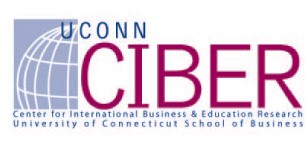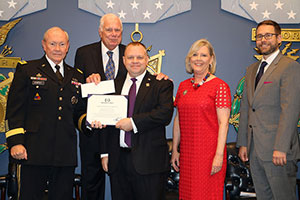Hartford Courant– UConn Economist Fred Carstensen, who was hired by the Hartford City Council to do analysis on the proposed downtown north development, has submitted his final report to the council.
All School of Business pressroom news
Hartford Courant– UConn Economist Fred Carstensen, who was hired by the Hartford City Council to do analysis on the proposed downtown north development, has submitted his final report to the council.
LinkedIn.com – On Friday, October 10th, the University of Connecticut (Uconn) Entrepreneurial Bootcamp for Veterans made history during their annual business pitch competition. Over 20 startup companies led by military veteran leaders pitched their businesses LIVE on air in 4 separate classrooms to determine which startup would win the cash prize!

For those who came out to the Bloomberg Training Session, below is additional information about completing the Bloomberg Certification.
The Bloomberg Certification (BESS) is a training portal that helps students like yourself learn core Bloomberg functionality and key market fundamentals. The training process includes three phases: training videos, exams and acknowledgments.
To get started:
1. Login to the Bloomberg Terminal using your own login name and password (If you do not have a login yet, see “Creating a Bloomberg Login”).
2. Type the Bloomberg mnemonic “BESS” followed by <GO> into the command line located in the upper right corner.
3. You should now be at the Bloomberg screen titled “Training Videos.” Follow the Bloomberg steps provided above or on your terminal screen in order to complete the training program.
For a more detailed description of how to login please click the following link: Bloomberg Creating Your Own Login
The University of Connecticut School of Business has been awarded a four-year U.S. Department of Education CIBER grant in excess of $1.1 million, to produce a series of programs and partnerships that center around manufacturing.

The CIBER—Center for International Business Education and Research—award comes following an extremely competitive application process in which only half of applicants had their awards renewed.Continue Reading
 The 7th Annual School of Business Undergraduate Networking Skills Forum on Sept. 24 gave freshmen from the University’s Business Connections Learning Community (BCLC) the opportunity to meet and mingle with Connecticut business leaders, many of them UConn alumni.
The 7th Annual School of Business Undergraduate Networking Skills Forum on Sept. 24 gave freshmen from the University’s Business Connections Learning Community (BCLC) the opportunity to meet and mingle with Connecticut business leaders, many of them UConn alumni.
Some 40 business people spent time encouraging the 87 freshmen, and sharing career advice, insight and suggestions about how to make a good first impression.
“Our alumni said they were very impressed,” said Fran Graham, manager of alumni relations for the School of Business. “They also commented that the students didn’t appear to be nervous, and that they were surprised that incoming freshmen could be so poised.”
“This is my second year attending this event and it is one of my favorites,” said Kirstin Ferreira ’12, a business analyst at Cigna. “I am heavily involved in the UConn Recruiting team for Cigna’s Technology Early Career Development Program (TECDP). I think it is incredibly important to teach these kinds of skills as early as possible, as I know the impact of a first impression.
“I got to where I am with the support of UConn’s Career Services department, and I want to do what I can to continue to help students find opportunities,” said Ferreira. “I was so impressed with the students, from their sharp attire to their career aspirations.”
Alyssa Kafka ’11, a business and technology senior analyst at Accenture, agreed.
“I come to the undergraduate networking forum because I know how intimidating it is to speak with professionals,” she said. “At any stage of your career, there’s always going to be someone more senior than you. And the more practice you have, the more comfortable and prepared you will be to speak to them. It’s my job as an alumna to help UConn business students find success and best represent our school. After all, I’m proud to call myself a Husky and I want them to be too!”
Among the pointers that the mentors offered included: encouraging students to make eye contact, present a firm handshake, wear comfortable shoes and, in some cases, be a bit less formal, Graham said.
—photos by Aileen Tobin
Push yourself out of your comfort zone, don’t be afraid of spreadsheets, never let your professional network grow cold, and don’t let anyone tell you that you can’t succeed.
That was some of the advice that close to 400 women entrepreneurs and executives heard during the second annual, sold-out, Connecticut Celebrates Women Entrepreneurs conference Sept. 19 at the UConn Stamford campus. Continue Reading
Future MBA students seeking high-quality programs without the price barrier of an Ivy League institution should consider UConn among their top choices, according to the latest College Atlas rankings.
The university’s MBA program placed among the top 100 MBA Programs in the country, putting UConn on the A-List for College Atlas’ Best Business Schools 2015.
“This list is for bright and ambitious students that are looking to find a school that has a reputation for high-quality education, marketable degrees, tuition they can quickly pay off, and reasonable acceptance qualifications that make getting into graduate school a possibility,” according to College Atlas.Continue Reading
 The School of Business’ Entrepreneurship Bootcamp for Veterans with Disabilities was recognized as one of the nation’s best and most innovative programs for improving the quality of life for U.S. military personnel.
The School of Business’ Entrepreneurship Bootcamp for Veterans with Disabilities was recognized as one of the nation’s best and most innovative programs for improving the quality of life for U.S. military personnel.
General Martin E. Dempsey, chairman of the Joint Chiefs of Staff, provided remarks at the 15th Annual Newman’s Own Award Ceremony at the Pentagon on Sept. 24. In addition to the honor, the UConn program will receive a $37,500 award.
“I was really surprised and extremely flattered,” said Program Director Michael Zacchea, a retired U.S. Marine Corps lieutenant colonel and a Purple Heart and Bronze Star recipient. “There are 400,000 organizations in this country that work with veterans. To be one of five selected for this incredibly prestigious award was truly an honor.”
The UConn Entrepreneurship Bootcamp for Veterans with Disabilities (EBV) is offered at no cost to participants, who typically come from across the Northeast. The program taps the talent of the UConn School of Business faculty to provide veterans, disabled due to their service, with cutting-edge training in entrepreneurship and small business management.
Zacchea hopes the award will bring greater recognition to the EBV program and further develop the network of services available to returning veterans. Despite its U.S. Navy sub base and the Coast Guard Academy, Connecticut isn’t known for embracing the military culture in the way that other states have, he noted.
“Historically the veteran population hasn’t had the attention here that it has in other states like Florida, Texas, California and the South,” he said. “We feel some of our award was due to our unsung work in an underserved area.”
Yet Connecticut offers many advantages to returning veterans, including educational and business opportunities, he said.
Unlike other entrepreneurship programs, the EBV addresses reintegration issues beyond just business. For instance, the veterans are offered a free business suit, courtesy of Brooks Brothers, to help ensure their business success. In addition, the program graduates have access to intense mentorship services for a year, so whether they want to start an IT business or a company that specializes in personal training, they have assistance identifying and overcoming business barriers.
UConn alumni Mitchell Strauss ’79 MBA, Ray Gustini ’65, ’65 JD, General Joseph Went ’53, Barbara Went and John Welch ’80 MBA, also attended the ceremony.
Newman’s Own, Fisher House Foundation, and Military Times sponsor the competition, which seeks to reward ingenuity for programs that benefit service men and women and their families.
“Improving lives for the military is the cornerstone of this program. Newman’s Own is proud to be part of an initiative that helps serve a crucial segment of Americans, those who serve our country,” according to Tom Indoe, president and chief operating officer of Newman’s Own.
Over 250 entries were submitted for the 2014 program. Seven judges evaluated each entry based on the organization’s impact to the respective communities, creativity and innovation.
View photos from the 2014 Newman’s Own Awards here.
Pictured: General Martin Dempsey, Chairman, Joint Chiefs of Staff; Michael Zacchea, Lt. Col. U.S.M.C. Ret, Program Director, Entrepreneurship Bootcamp for Veterans with Disabilities; Tom Indoe, President & Chief Operating Officer, Newman’s Own, Inc.; Suzie Schwartz, Trustee, Fisher House Foundation; Peter Lundquist, Vice President & General Manager, Military Times. Photos by Ashley Estill.